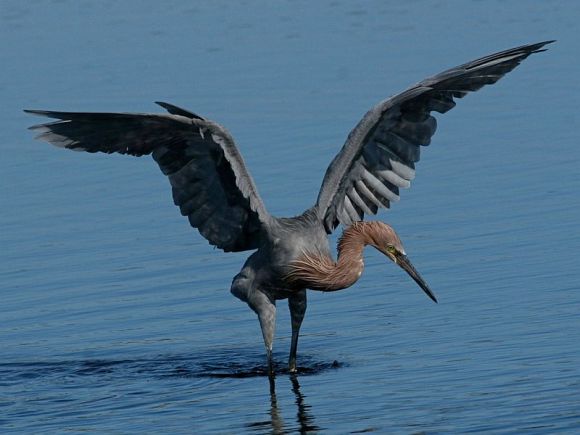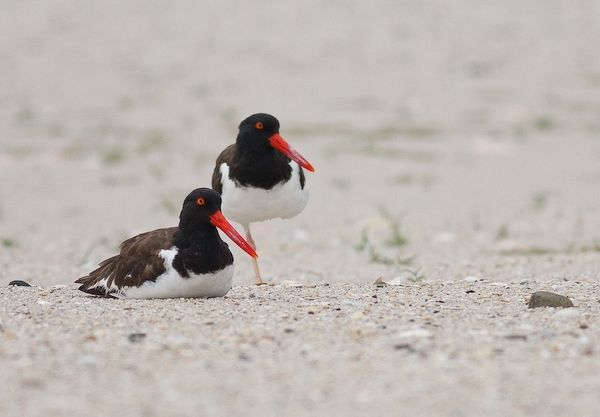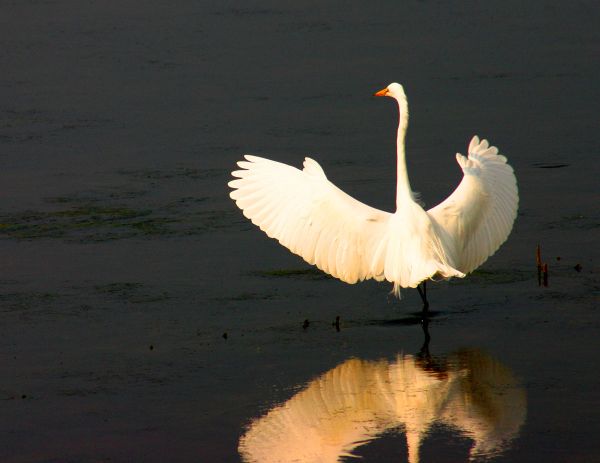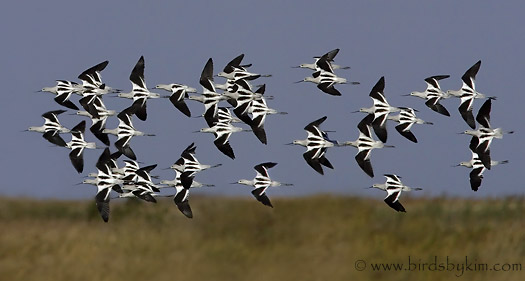
14 January 2010
What is this bird doing? If we had a video we would call it dancing. He’s stamping and jumping, charging through the water, raising his wings and running in zig-zags like crazy. Sometimes he leans his head to one side and runs in a circle as if to scoop the air.
No, he’s not listening to the beat of a different drummer. He’s scaring the fish so he can catch them. Meet the reddish egret.
Reddish egrets live beyond the bounds of Pennsylvania because they eat saltwater fish. They’re found in shallow saltwater estuaries along the coasts of Florida, southern California and the Gulf coast of the U.S. They like warm weather so well that they move further south to the coasts of Mexico in the winter.
Though called “reddish” egrets they’re not always red. Juveniles of this dark morph group are chalky looking and all ages of the white morph birds are white. This would make them hard to identify among wading birds but their unique hunting technique sets them apart. All you have to do is watch for a while. They act like madmen. They’ll make you laugh. Check out these videos to see what I mean: juvenile reddish egret on the hunt and an adult stirring up lunch.
If you want to see a reddish egret you’ll have to visit the southern coast. Chuck Tague photographed this bird in Florida.
(photo by Chuck Tague)






